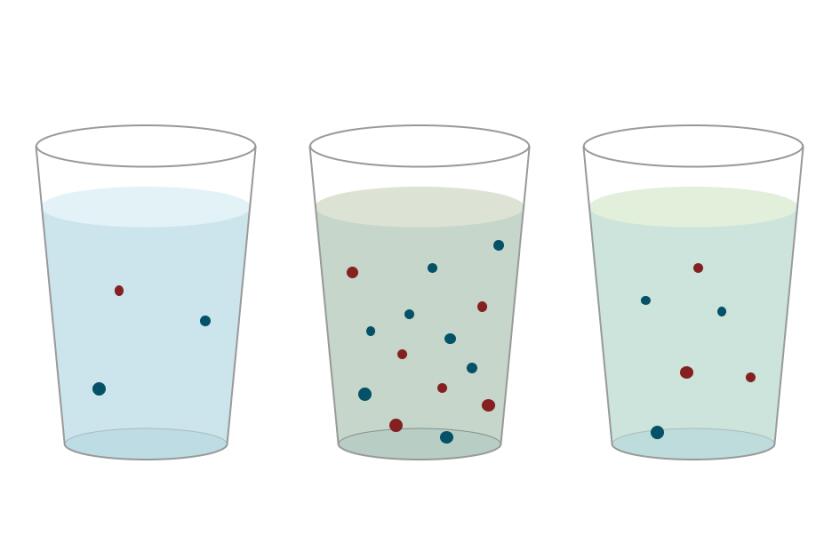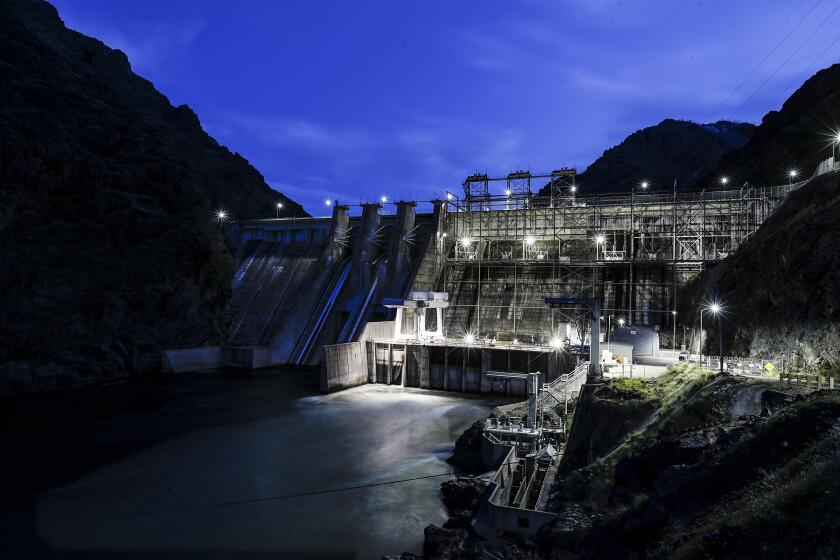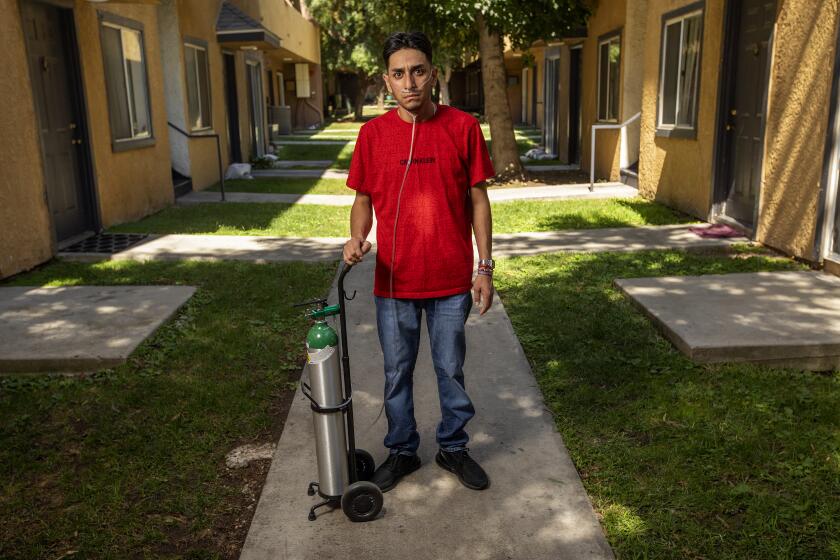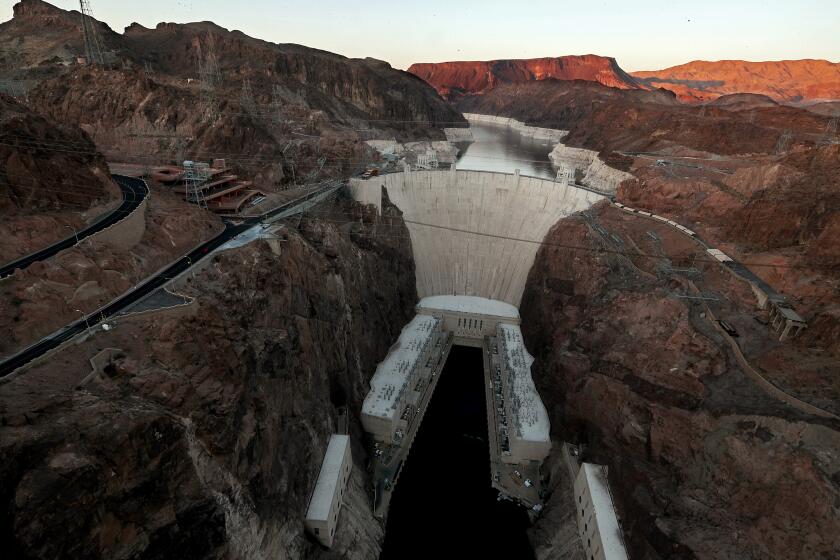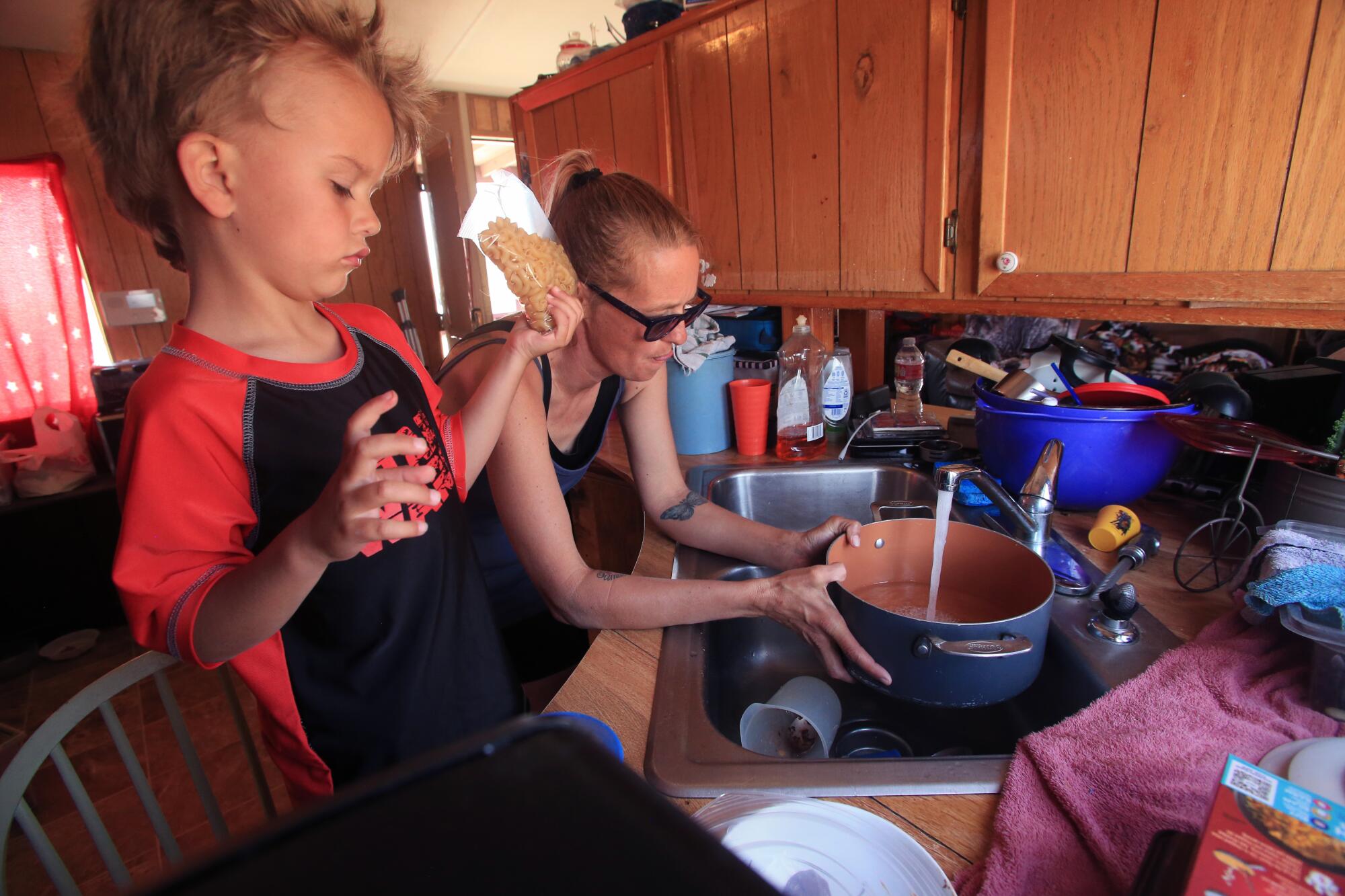
In the Mojave Desert community of North Edwards, 5-year-old Adam Ezelle knows never to drink water from the tap, which contains dangerous levels of arsenic.
In the tiny farming and oil refining community of Fuller Acres, where a potent carcinogen has tainted groundwater wells, Maria Martinez and her family say they feel neglected by a state that has pledged clean water for all of its residents.
And in a dusty corner of Bakersfield, preschool through eighth-grade students at Lakeside School line up to fill paper cups from water jugs that have replaced their sinks and fountains, which were capped because of contamination.
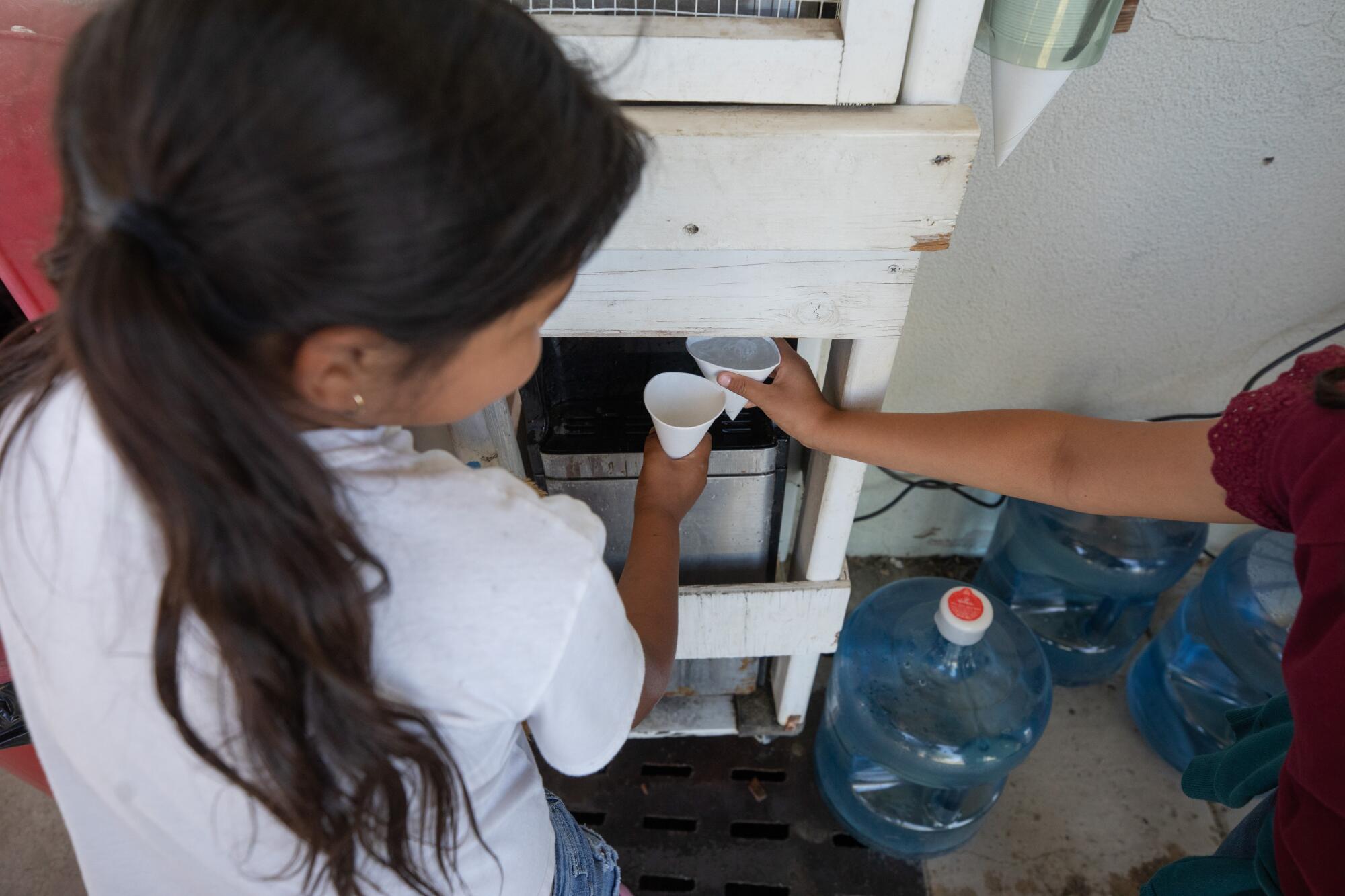
More than a decade after California became the first state in the nation to declare that access to clean, safe and affordable drinking water was a human right, about a million residents remain connected to failing water systems — many of which may increase their risk of cancer, liver and kidney problems, or other serious health issues.
The number of failed water systems has jumped about 25% since 2021 , an increase driven partly by the collection of more data. Today, about 400 such systems exist across California, and experts warn that hundreds more are poised to fail because of new and higher testing standards.
“It’s a bit of a ticking time bomb,” said Gregory Pierce, director of the Human Right to Water Solutions Lab at UCLA. With new regulations slated to take effect in the next few years, many systems will need to take urgent and proactive steps or “they’ll be out of compliance and be failing.”
Check your water supplier’s levels of arsenic, nitrate and 1,2,3-TCP, and any steps they are taking to make the water safe.
The crisis has cast a harsh light on the state’s ability to provide clean and affordable drinking water to all its residents, particularly those in the Central Valley, where widespread contaminants afflict communities with substandard infrastructure and where the heavy use of agricultural fertilizers and fumigants, as well as the overpumping of aquifers, has worsened water quality.
The State Water Resources Control Board insists that limited resources and a lack of involvement from some local governments have partly contributed to a persistent backlog of cases and assistance requests.
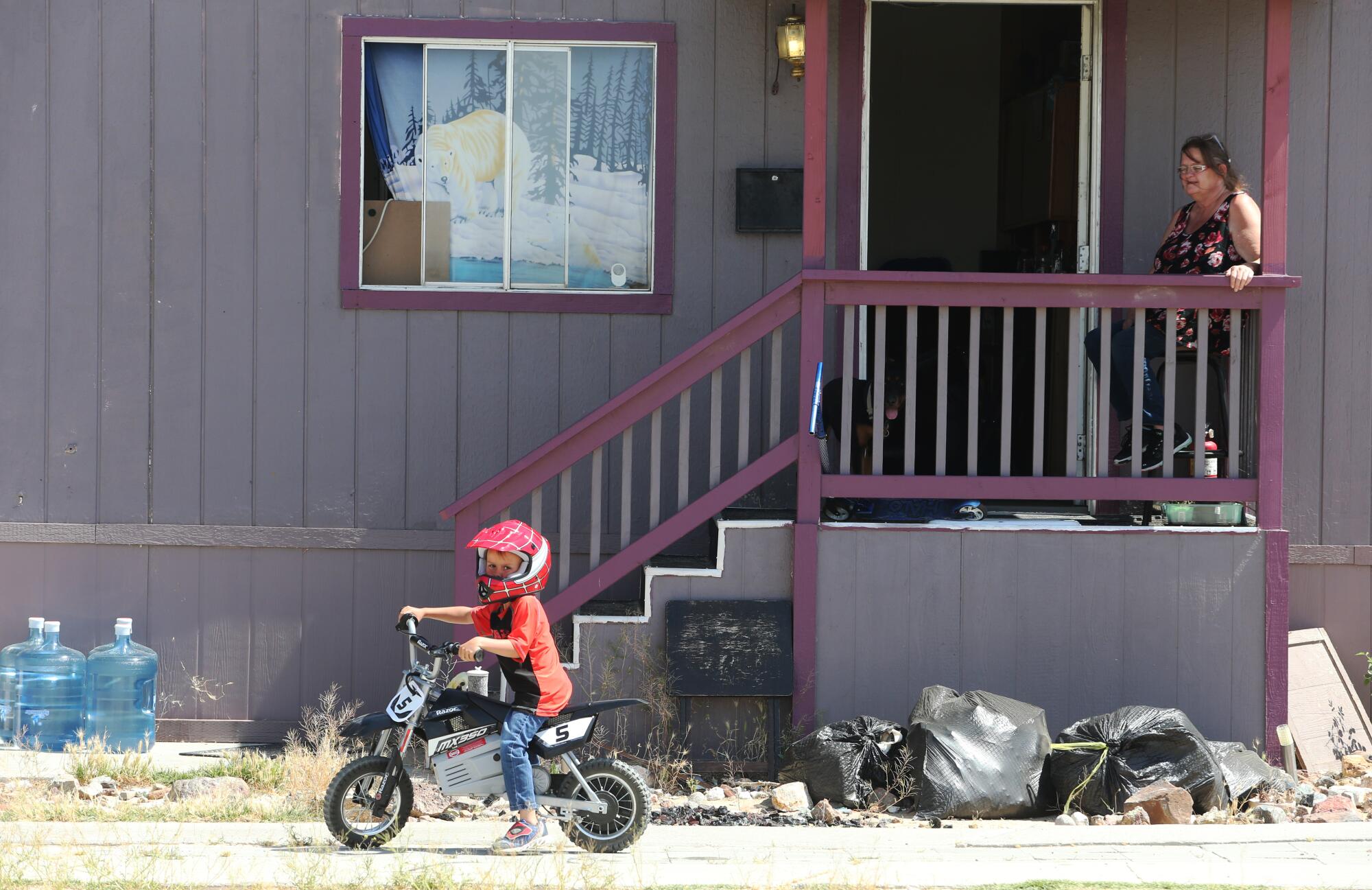
“The amount of work that’s needed across all of these failing systems is much larger than our capacity,” Bryan Potter, senior water resources control engineer with the Division of Drinking Water, said at a public gathering this year.
However, some experts, community groups and government auditors say the state can and should be doing more to ensure that all Californians have access to clean, safe water.
The board, also known as the State Water Board, “has funding available to help these failing systems improve the quality of their drinking water. Nonetheless, the board has generally demonstrated a lack of urgency in providing this critical assistance,” Michael S. Tilden, then-acting California state auditor, wrote last year.
Aggressive and impactful reporting on climate change, the environment, health and science.
“In fact, the time necessary for water systems to complete applications for funding and for the State Water Board to approve and award that funding nearly doubled from 17 months in 2017 to 33 months in 2021,” Tilden wrote.
The delays, critics say, have added hardship to the lives of those who lack clean water, and increased the likelihood they will suffer negative health outcomes.
Concern over the availability of clean drinking water has grown significantly in California as global warming, drought and climate whiplash threaten traditional sources.
At the same time, increased understanding of the potentially harmful effects of both natural and manufactured contaminants has raised new health alarms.
A Times analysis found that the problem of failed water systems is particularly acute in Kern County, where about 131,500 residents are served by 65 failed systems — the highest number of failing systems in the state. Nearly 80% of those systems have been categorized as failing for three or more years and nearly two-thirds have served contaminated water to customers in the last few years.
Many people connected to failed systems must drive multiple times a month to neighboring towns or cities to purchase potable water at a cost of hundreds of dollars, while paying monthly bills for water they can’t consume.
Some rely on twice-a-month deliveries funded by state grants and ration their water until the next distribution. When that runs out, some families are left with no choice but to drink and cook with contaminated tap water.
For Dana Ezelle, the lack of safe drinking water is something she lived with for nearly 20 years.
When she moved into her purple trailer in the Antelope Valley — just north of the dry lake bed where NASA’s space shuttle would make its return to Earth — she was warned that the tap water had high levels of arsenic.
“They said to drink the water at your own risk,” she said. And she did, because she couldn’t afford to buy bottled water.
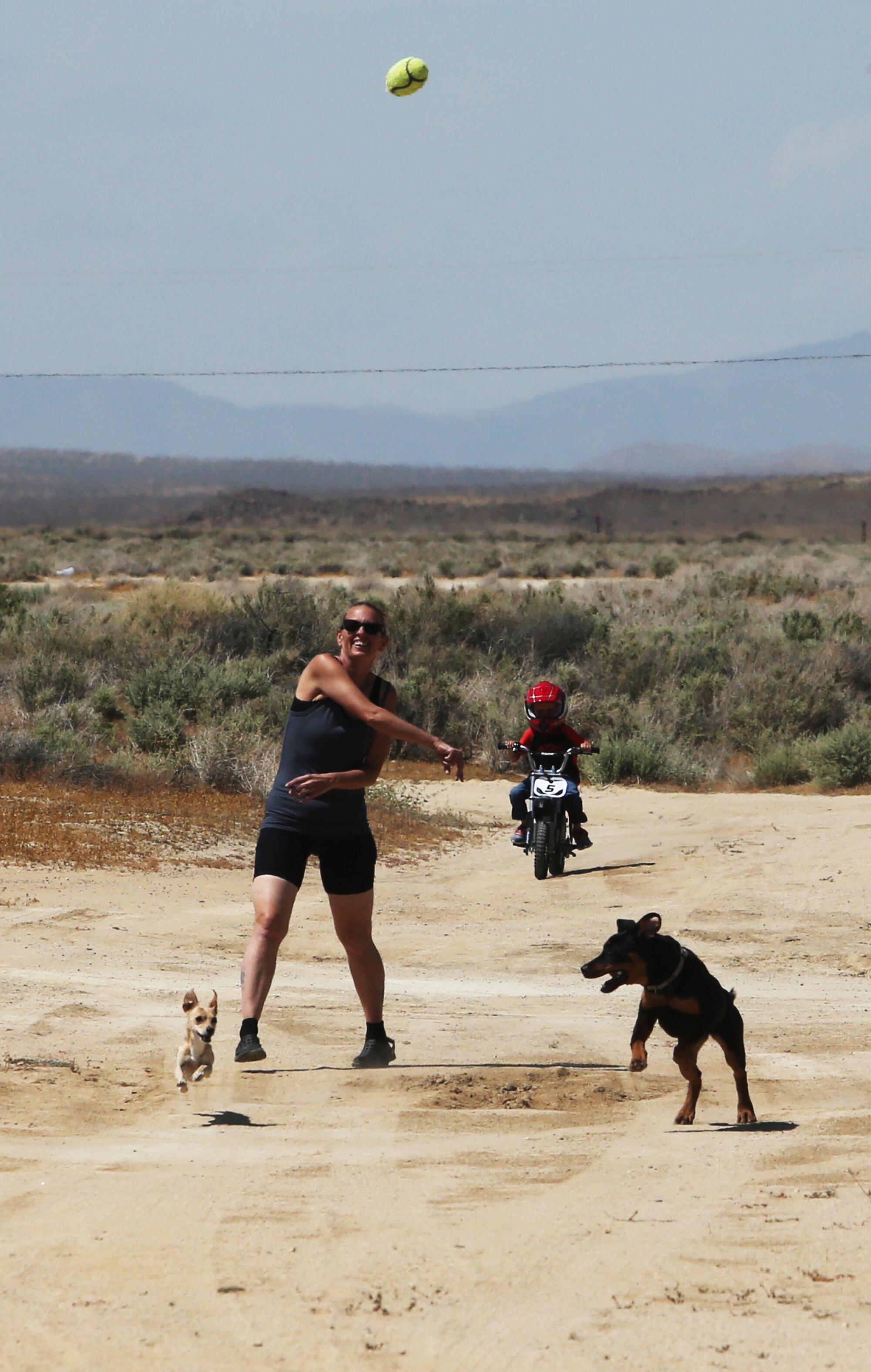
Arsenic is a naturally occurring element that can cause cancer with chronic, long-term exposure. Consumption of large doses of arsenic in drinking water can also cause nausea, vomiting, diarrhea, numbness in the fingers and toes, partial paralysis or discoloration of the skin. It has also been associated with harmful effects on children’s cognitive development and decreased mental abilities among adults.
Since 1999, Fountain Trailer Park in North Edwards has received 74 violations for exceeding safe drinking water standards for arsenic. In the last three years, customers received notices that their water has arsenic up to eight times the state’s threshold of 10 parts per billion, according to data obtained by The Times. Plans are underway to connect the trailer park with a larger water system; however, that system is also contaminated.
Before she recently moved, Ezelle, 47, still drank and cooked with the tap water. She saved the water deliveries — six 5-gallon jugs every other week — mostly for Adam, her blond and musically inclined son. She said that she hadn’t had a normal bowel movement since she moved to the desert community, and that their skin was always dry and itchy from showering.
In the summer, when temperatures in their home surged to 120 degrees, they finished the safe water within days.
“If I run out of Sparkletts water, my son and I are forced to drink this water because I don’t make enough to buy more,” said Ezelle, a single mother who until recently survived on some $12,900 a year.
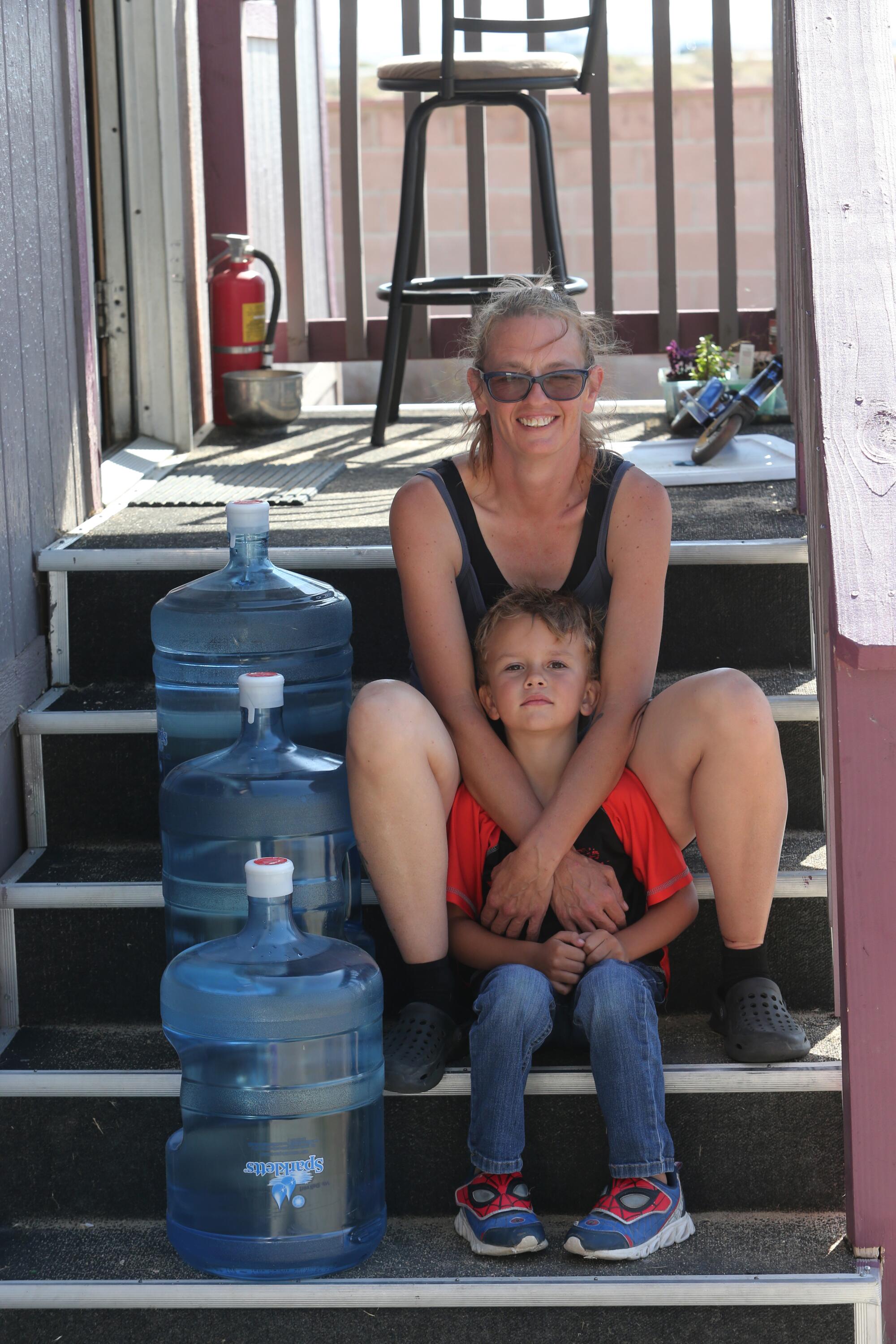
As she spoke, four empty jugs stood on the floor nearby. It would be another week before the delivery of more clean water.
Experts, officials and community activists say the proliferation of failing systems is due to multiple factors — aging infrastructure; inadequate financial, managerial and technical capacity within systems; aquifer overpumping; decades of discriminatory policies and chronic disinvestment in affected communities.
They also blame widespread use of agricultural fertilizers and fumigants, and say the health risks are borne disproportionately by rural, low-income and predominantly nonwhite communities.
One of America’s reddest states is seeking 100% clean energy. But does hydropower count as clean?
“The issue is, [the human right to water] is a moral obligation more than a legal obligation,” said Mark Gold, director of water scarcity solutions for the Natural Resources Defense Council. “That’s why you see the results that we’ve had. Unless there’s a legal obligation to clean up the water supply and provide it to your residents, then we end up perpetuating the system that we have, which is environmental racism.”
In California, the State Water Resources Control Board is responsible for enforcing regulations that ensure systems meet federal and state drinking water standards. As part of its role, the board’s Division of Drinking Water monitors risks that could tip water systems to failure — such as violations of drinking water standards and treatment techniques; extreme water bills and household socioeconomic burden; and the net annual income of system ratepayers.
In effort to address failing systems, Gov. Gavin Newsom established the Safe and Affordable Drinking Water Fund, which provides $130 million annually until June 2030 for struggling water systems. Similarly, California’s Safe and Affordable Funding for Equity and Resilience Program, administered by the water board, provides tools — including maps and data, funding sources and regulatory powers — to increase access to clean drinking water. Under the program, the board works with residents, water systems, local governments and other agencies in an effort to achieve the state’s goal of providing safe, clean, affordable and accessible water to all of its residents for drinking, cooking and sanitary needs. Other drinking water funds have also been established.
Yet water system operators and organizations working with them say they are frustrated with the lengthy and complicated application process and how long it can take to complete projects.
Since 2008, the water system in El Adobe, on the outskirts of Bakersfield, has exceeded arsenic standards. Although it has agreed to consolidate with the nearby Lamont Public Utility District — an effort that has received a $25.4-million grant from the water board — the state estimates the project won’t be completed until June 2025.
The booming popularity of countertops made of engineered stone has driven a new epidemic of silicosis, an incurable lung disease, researchers have found.
Kyle Wilkerson, president of the El Adobe Property Owners Assn. who runs its water system on a voluntary basis, said he’s frustrated by the length of time it’s taken to get clean water.
“This is just ridiculous. There’s no reason for it to take this long,” he said. “They keep saying two years, three years or six years, and it’s been 12 years since I’ve been out here.”
The board said the consolidation has taken time partly because Lamont’s water is also contaminated, which has to be remediated first.
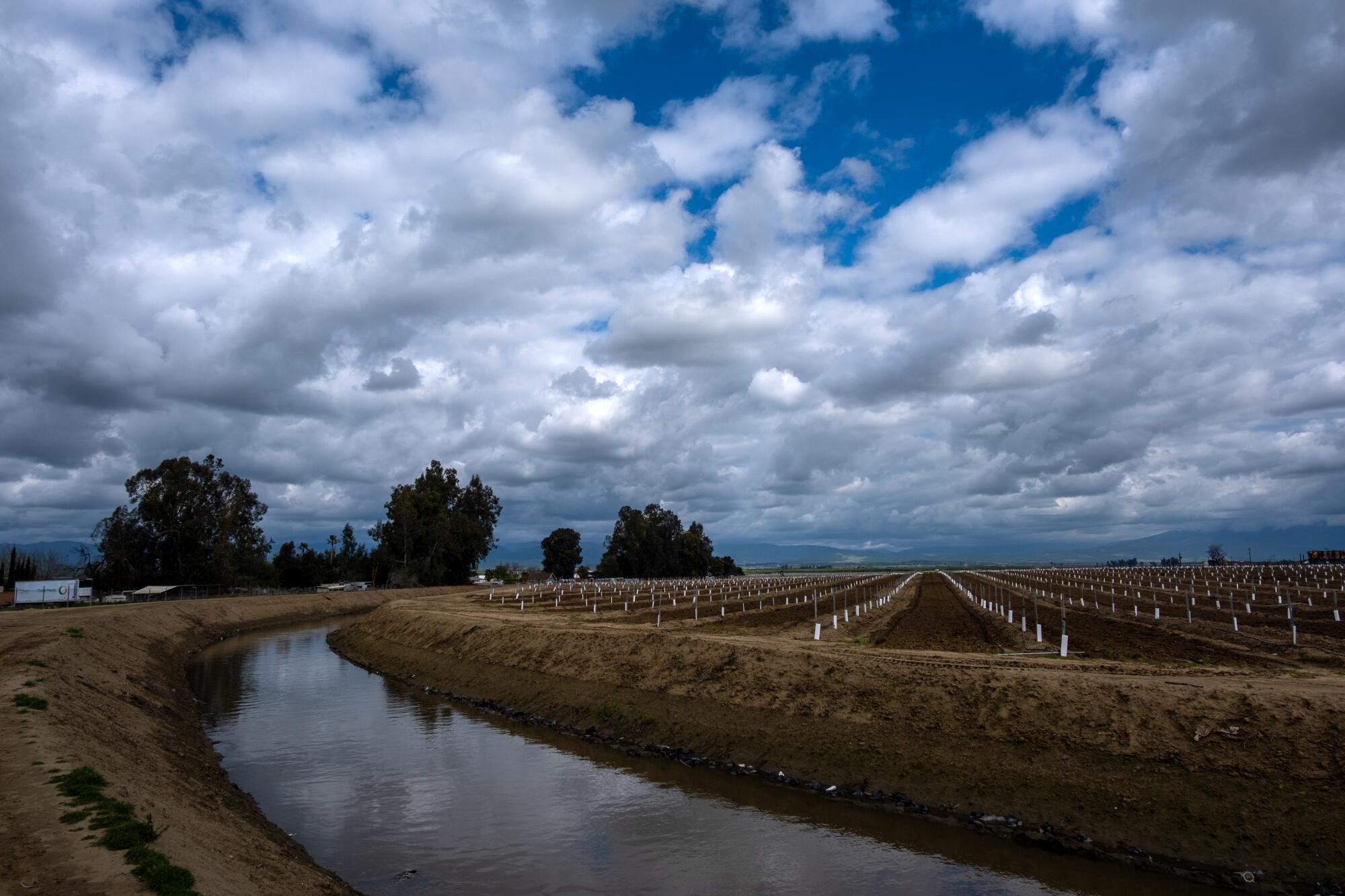
A state audit blamed the water board’s “lack of goals and metrics” for likely delays and warned that “the longer the board takes to fund projects, the more expensive those projects become. More importantly, delays increase the likelihood of negative health outcomes for Californians served by the failing water systems.”
State water officials disputed the auditor’s criticisms. They said they’ve reduced the number of people affected by failing water systems by 40% between 2019 and 2022 — from 1.6 million people to 934,000.
Also, in March, the State Water Board adopted new protocols for its Expedited Drinking Water Grant Program to fast-track projects in disadvantaged communities. Joe Karkoski, deputy director and head of the board’s Division of Financial Assistance, said officials are hoping to expedite funding approvals from a year or more to four to six months. But he acknowledged the goal is ambitious.
Toward a more sustainable California
Get Boiling Point, our newsletter exploring climate change, energy and the environment, and become part of the conversation — and the solution.
You may occasionally receive promotional content from the Los Angeles Times.
E. Joaquin Esquivel, chair of the water board, acknowledged the scope and complexity of the challenge but also touted the state’s progress in recent years. Since 2019, more than 200 systems that were failing to meet drinking water standards have been brought into compliance, he said. He attributed the gains partly to $600 million in grant funding that has gone to small and disadvantaged communities.
Yet funding and local roadblocks, such as volunteer-run and under-resourced boards, remain fundamental obstacles, he said. He conceded that it was a “travesty” that one of the largest economies in the world had so many people living without reliable drinking water.
“I take the charge very seriously and with a lot of humility when I hear about the endemic lack of investment and attention,” Esquivel said, noting that he grew up in the eastern Coachella Valley and has seen many of these challenges firsthand.
The pressure of more droughts, floods and other challenges due to climate change is only adding to the urgency. But California continues to have more stringent drinking water standards than any other state in the nation, he said. “At least we have technical capacity, money, and I hope the continued faith that California is actually leading the nation, and doing well by really difficult topics that span multiple generations.”
Athough a system that’s failing does not necessarily mean it’s contaminated, 77% of the state’s failing water systems have at least one contaminant exceeding safe drinking water standards. In Kern County, 83% of failing water systems have exceeded a maximum contaminant level, or MCL.
The most common contaminants in 2022 were arsenic, which is colorless and odorless; nitrate, which can come from animal manure, fertilizers and sewage leaks; and 1,2,3-Trichloropropane, a carcinogen found in industrial solvents and some pesticides.
According to state data, 22% of primary MCL violations last year were for arsenic, and 22% were for nitrate, the highest of any contaminants. Twenty percent were for 1,2,3-TCP.
Systems are required to routinely test their water sources. If test results exceed an MCL, systems must attempt to address the contamination, such as with treatment techniques or dilution. When it can’t get levels below standards, they must routinely notify customers that their drinking water is contaminated.
Across the state, 81 systems in the last three years have sent 850 notices to customers that their drinking water had high levels of one of the three most common contaminants, according to system-level data obtained by The Times.
In Kern County — one of the most productive farming counties in the nation — the use of fertilizers and crop fumigants has resulted in numerous sources of contamination for nitrate and 1,2,3-TCP.
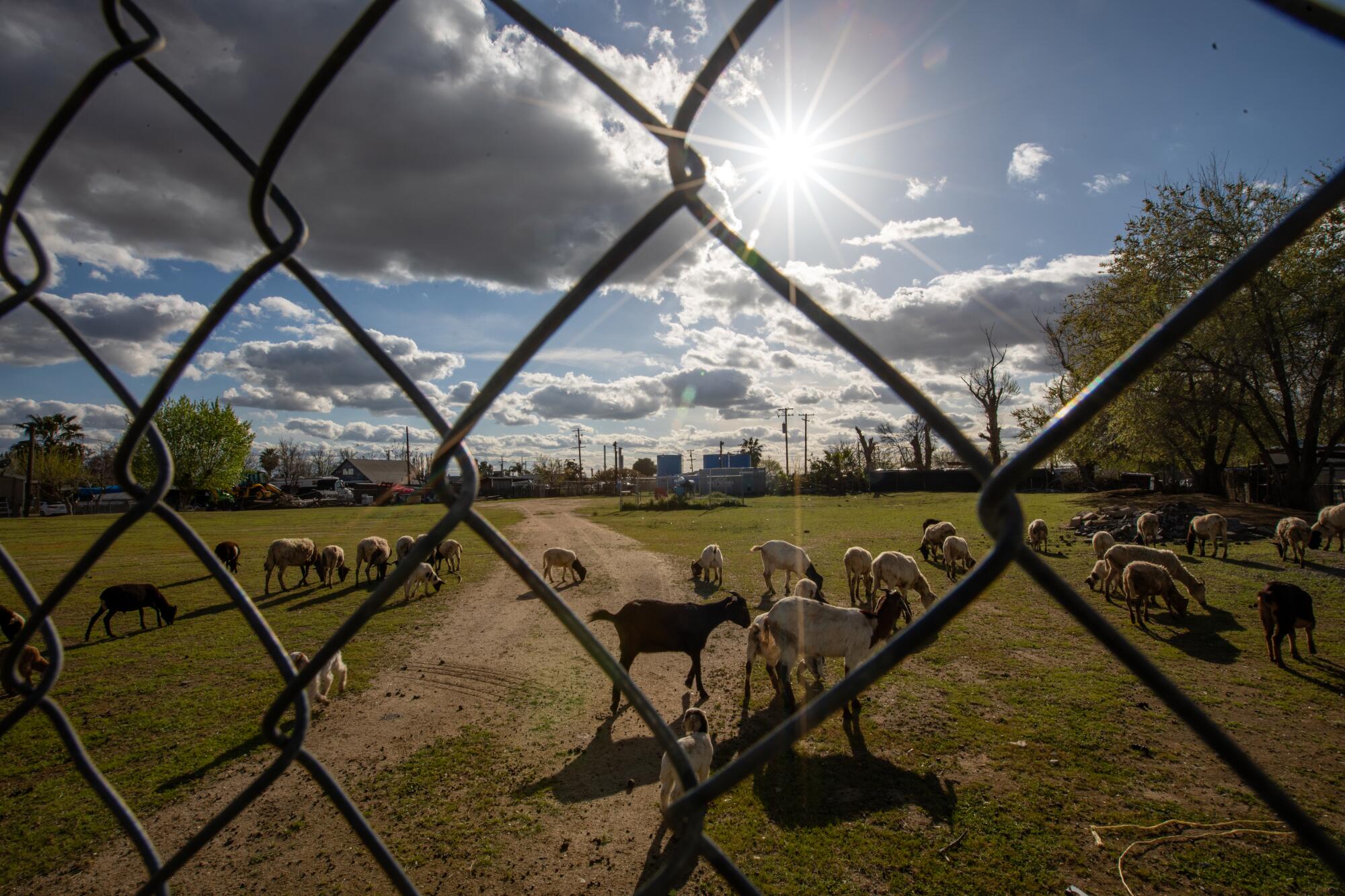
Arsenic is typically contained in rocks and sediment, but it can become soluble and enter groundwater supplies when it encounters conditions of low oxygen and high pH levels — both of which are particularly common in older groundwater.
That can be a major problem for the Central Valley, where worsening cycles of drought and dwindling supplies are causing growers to drill deeper than ever and tap into older reserves.
“Deeper wells that have generally older groundwater tend to have more of a problem with arsenic than shallower wells,” said John Izbicki, a research hydrologist with the California Water Science Center. “In places like the San Joaquin Valley, where shallower wells have, over the last many decades, extracted more recent groundwater, people are going deeper and deeper, and problems with arsenic are becoming increasingly common.”
Other researchers say that subsidence — the sinking of the earth due to the overpumping of aquifers — can also release trapped arsenic into groundwater.
Izbicki said he’s sampled wells with concentrations as high as 1,500 parts per billion, and some colleagues have even seen numbers as high as 10,000 in the Central Valley.
A recent study estimated that nearly 1.5 million people in the Central Valley rely on public water systems that may have moderate or high levels of arsenic. Elevated nitrate levels may affect more than 500,000 people.
Clean water advocates say delays in addressing such problems have potentially grave health impacts.
Joseph Heide, community development manager at the nonprofit Self-Help Enterprises, said that projects to address water quality problems can take five to 10 years to finish, and that officials need to expedite them to three.
“We need to make sure small, disadvantaged communities have the resources and the funding to fix their water within that three-year time period, because this has real impacts,” said Heide, who helps under-resourced communities access clean drinking water in the San Joaquin Valley — the fertile southern region of the Central Valley.
“There are real people on the ground that have lived with arsenic in their water for 10, 15 years. … People drinking water with arsenic or 1,2,3-TCP have higher rates of cancer, and you can definitely see that in the Central Valley.”
Although statistics indicate that Central Valley counties have a moderate cancer prevalence compared with other regions in the state, cancer was the second-leading cause of deaths in Fresno County from 2016 to 2020 and the first in Kern County from 2008 to 2018. Another recent study found that thyroid cancer associated with high nitrate contamination in drinking water wells is widespread in the Central Valley and disadvantaged communities, which had double the incidences of non-disadvantaged communities.
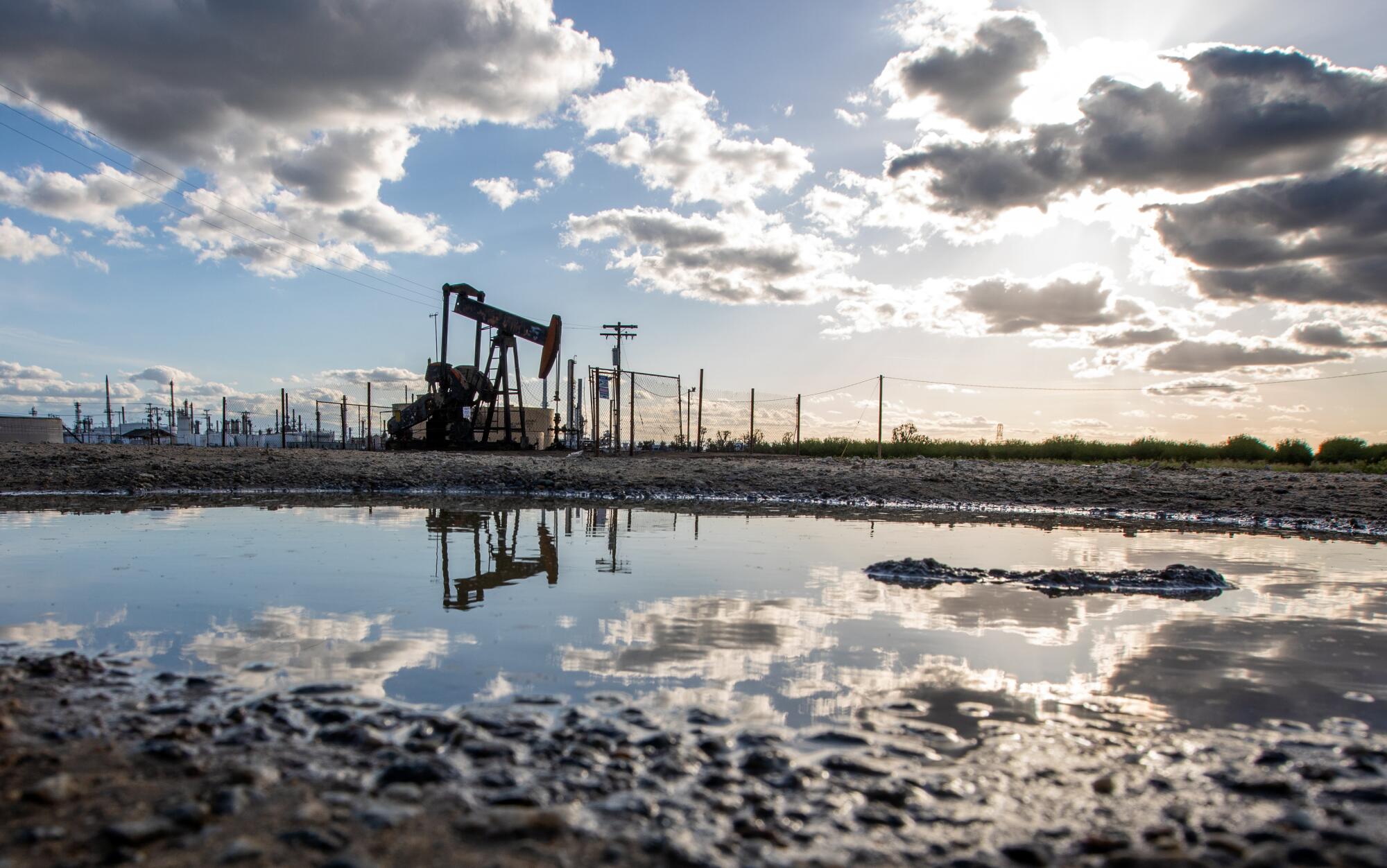
In Fuller Acres, where oil pumpjacks bob amid lush orchards, Maria Martinez and her family had never heard of 1,2,3-Trichloropropane until 2018, when they received a notice saying the tap water in their home had high levels of the chemical.
A component of soil fumigants that Central Valley growers once used to kill microscopic plant pests, 1,2,3-TCP causes cancer in lab animals, as well as liver and kidney damage, and is presumed to do the same in humans. Short-term exposure can cause eye, throat and skin irritation, and may affect memory, concentration and muscle coordination.
The presence of the chemical has generated numerous lawsuits over the years by water suppliers against the Dow Chemical and Shell Oil companies, accusing the manufacturers of failing to warn people of the risks. Although the potential health effects had been known for decades, it wasn’t until 2018 that the state mandated testing for the carcinogen.
News of the contamination concerned Martinez.
“I used the water for many years, and I don’t know if there will be future health risks,” said Martinez, 64, who moved to the rural, unincorporated community near downtown Bakersfield about 30 years ago. She said neighbors and others in the area have died from stomach cancer, and she and others wonder if their water was to blame.
Residents recently started receiving potable water after asking their provider, Fuller Acres Mutual Water Co., to apply for state-funded water deliveries until a project to address the contamination is completed. But that may take years. For now, the 5-gallon jugs every two weeks are enough for cooking and brewing coffee, but the Martinez family still buys their own bottled water, spending some $50 a month in addition to a $70 monthly water bill. There’s also the price of gas. It’s an economic stressor for a family living off some $14,500 a year.
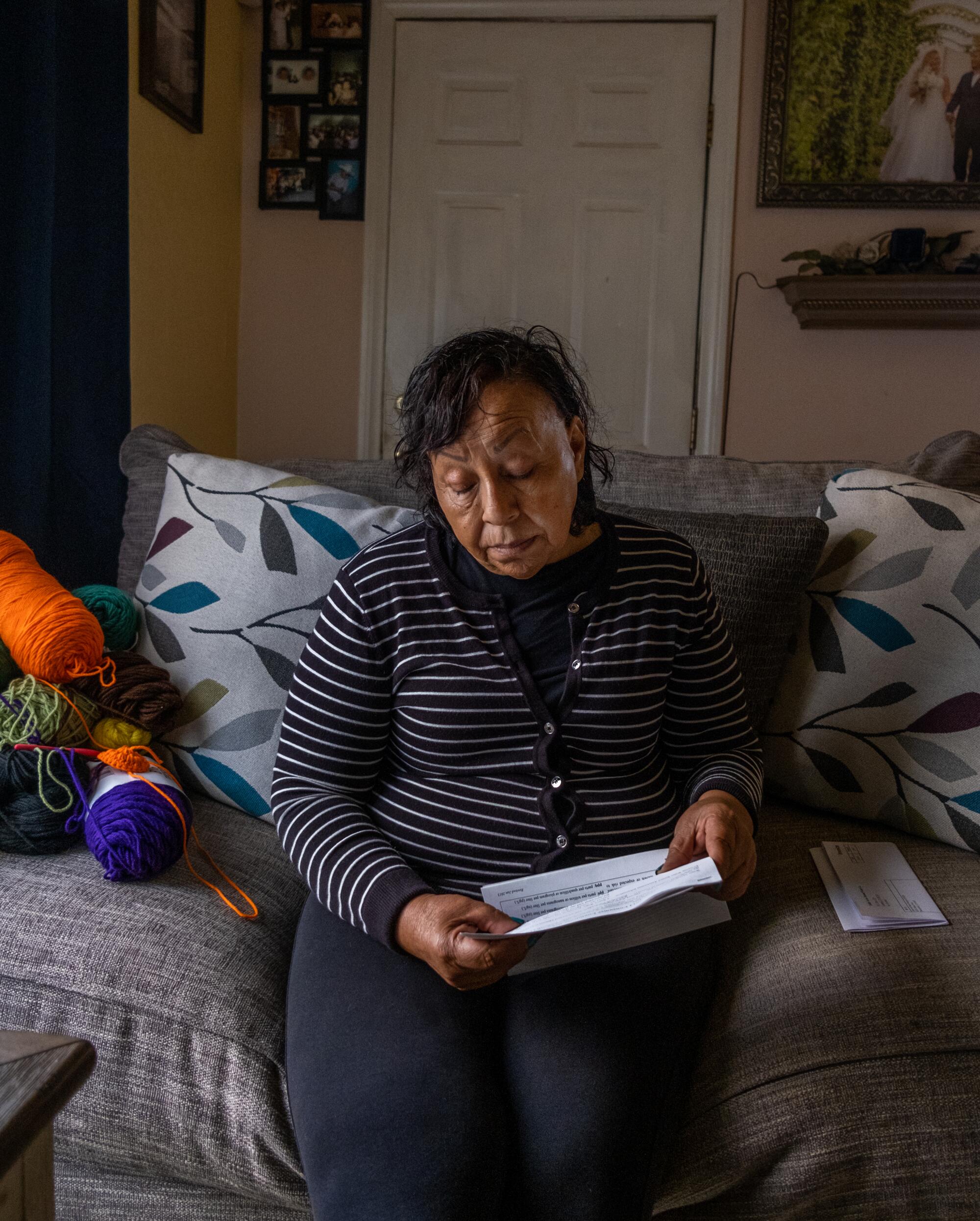
They also worry about other forms of exposure: Showering. Washing dishes. Brushing their teeth. Eating fruits and vegetables from their gardens.
Living like this, Martinez said, makes her and her family feel neglected.
“We’re a really poor community and a community with lots of problems.” Even in Guanajuato, Mexico, a less affluent state where she was born and raised, communities had things like sewer systems and streetlights, she said. “And those of us living in the United States, where people supposedly live the American dream, we don’t have a sewer system and clean water.”
Some experts worry the growth of failing Central Valley water systems offers a glimpse into California’s future as climate change, drought, groundwater overpumping, aging infrastructure and heightened water standards push more systems to the brink. They say that addressing these failures will require not only more effort by the state, but from local officials as well.
“I think with enough resources, money, people and political will, the human right to water is absolutely achievable in California,” said Max Gomberg, an independent consultant working with environmental justice advocates and a former staffer at the State Water Board. “But it’s going to take all of that to a degree that has not been provided in the 11 years since the Human Right to Water Act was passed.”
Much of Kern County’s challenges have to do with the sheer number of public water systems in the county. Communities here rely heavily on groundwater, and many are served by small systems often run by volunteer boards with little staffing and limited income for long-term investments.
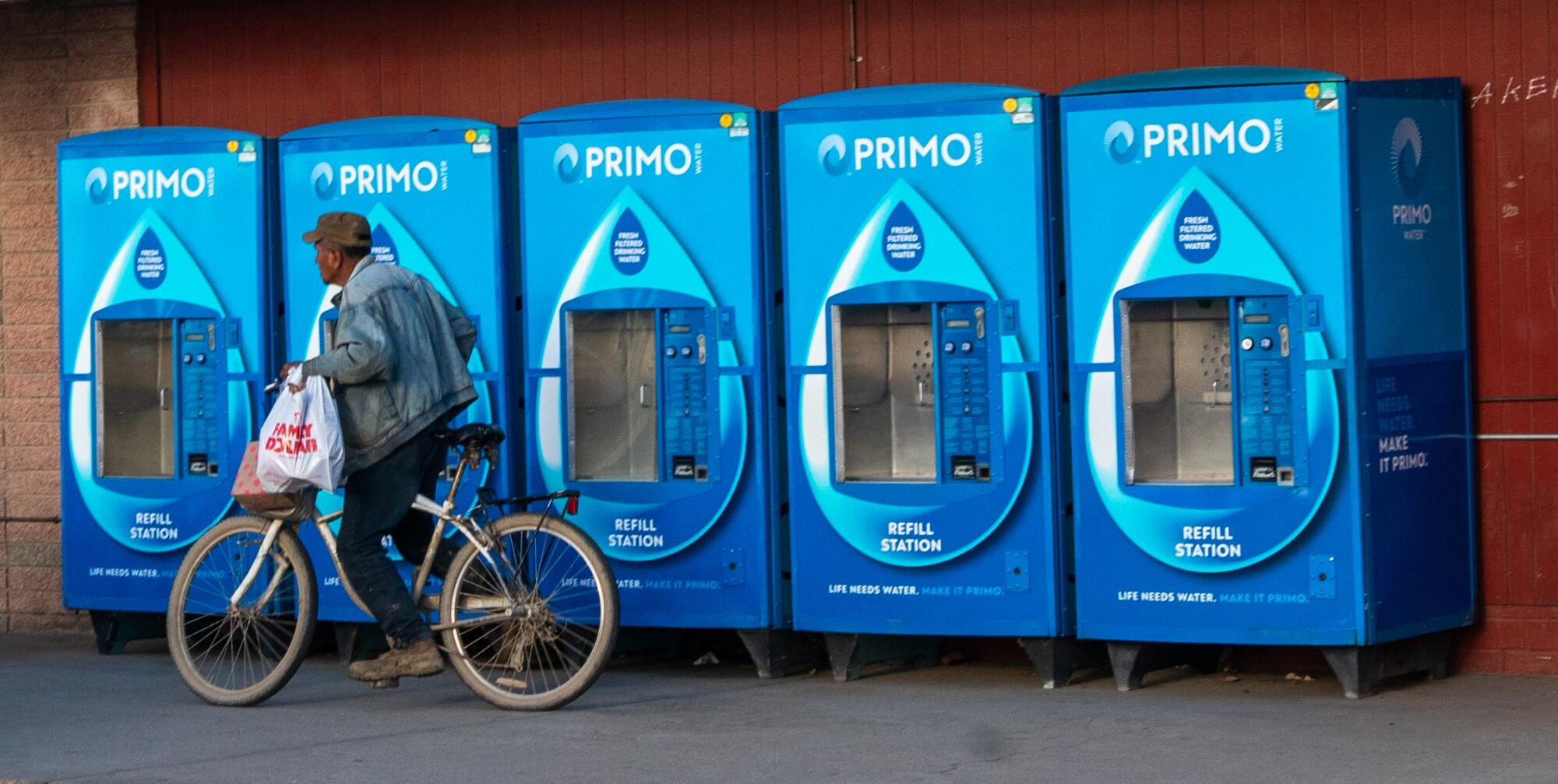
“A lot of these small systems operate to failure,” said Darrin Polhemus, deputy director and head of the Division of Drinking Water at the State Water Board. “A well-run, larger system never actually gets there.”
Contamination problems can surprise small water suppliers if they haven’t been doing sufficient maintenance or charging enough to pay for needed upgrades, he said.
It’s why state officials often believe that the best long-term solution is consolidation — connecting smaller failing suppliers to larger utilities or nearby towns. But some water systems are too remote to physically consolidate, and at roughly $1 million a mile, it’s a costly option and can be met with resistance.
To add to the challenges, some counties have not been active partners in remediation efforts. “The governing structures of the district level, then the communities and then the county, they’ve been really kind of hands off,” Polhemus said.
It’s a problem that clean water advocates have noticed as well.
“The state does have some responsibility in not addressing the challenge, but I think the board is trying to do a lot to address the issue,” said Erick Orellana, senior policy advocate for the nonprofit Community Water Center and a member of the Safe and Affordable Funding for Equity and Resilience Program’s advisory group. “It really just needs more local partners to help address the challenges, and certainly Kern County has not stepped up to be a partner yet.”
Amy Rutledge, assistant director of the Kern County Public Health Department, said the county can do only so much because it doesn’t regulate its public water systems.
“We are here to provide the water systems with any support they may need, answer any questions or concerns they may have and to facilitate between the water system and state as best as we can,” she said.
But getting counties and municipalities to be more involved is easier said than done.
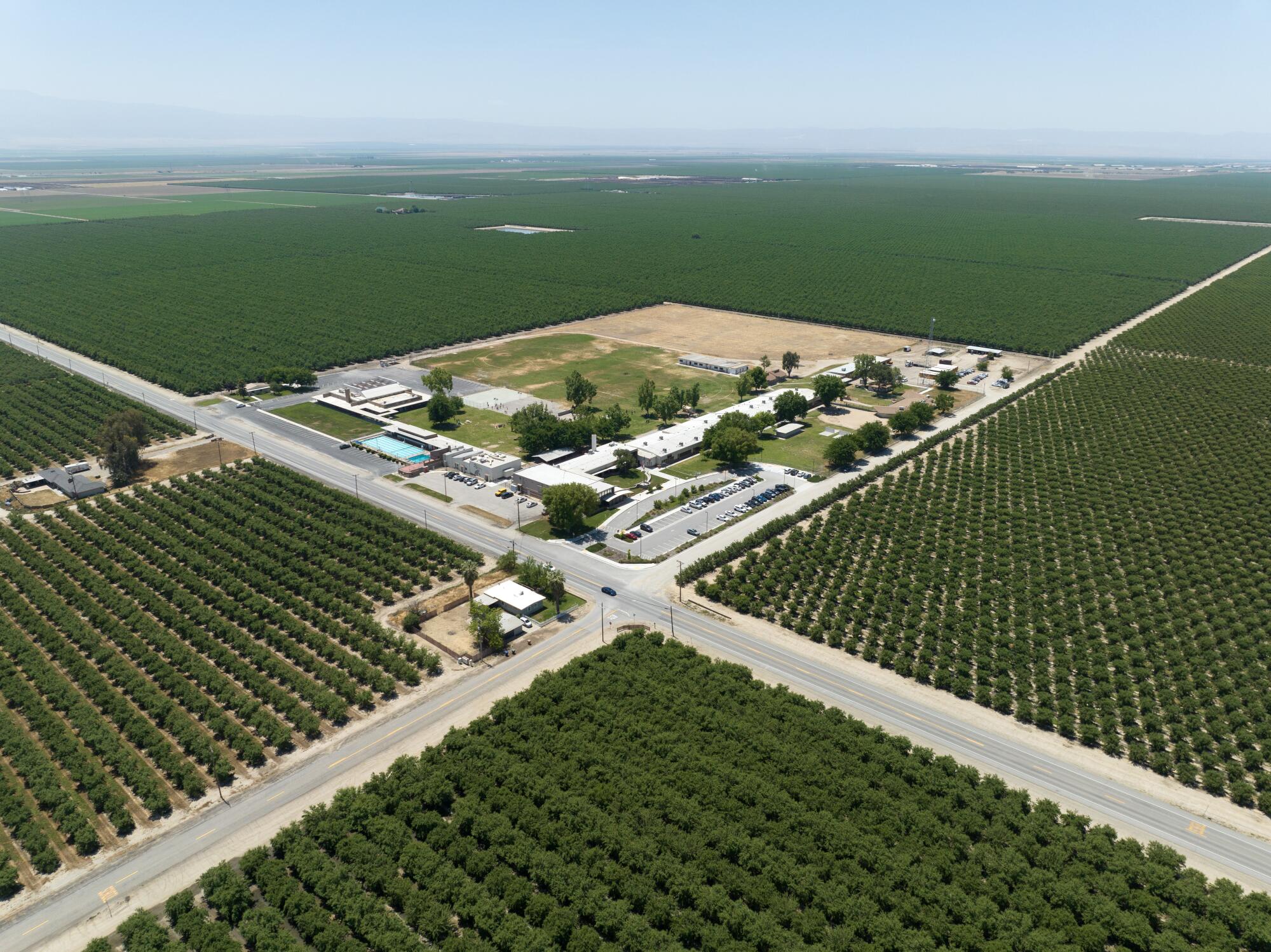
For more than a decade, the staff and students at Lakeside School in Bakersfield have been almost entirely reliant on bottled water. If you turn the taps on a classroom sink, nothing will come out.
Officials there have been reporting arsenic levels above the Environmental Protection Agency’s limit since 2009, with an average reading of about 18 parts per billion. The school district has tried a variety of solutions, including an attempt to have its water system join Bakersfield’s municipal system. But the city fought the proposal, stating that it didn’t want to take on the maintenance of that pipeline, according to Supt. Ty Bryson. After several years of going back and forth, the city prevailed, and the proposal fizzled.
On a Friday morning this spring, Principal Kristin Angelo pointed to a seating area that was installed where a cluster of water fountains once stood, and a hand-washing station where all the spigots had been capped and sealed.
“It would be nice to not have to worry about it,” Angelo said as kids queued up at one of the school’s water stations, where they filled paper cups from 5-gallon jugs that require near-constant replacement. “To not have to deal with cups and refilling bottles and then staffing to deliver them — it’s just a whole other layer.”
Colby, then a fifth-grader, said he wished he could use water from the stations for art projects, but it’s against the rules. “It would be nice to be able to turn it on and use as much as we want,” he said.
Lakeside is one of 57 schools in California with a failing water system, and 76 more are at risk of failing.
“They talk about a human right to water, and I think something like that is so basic and essential,” Bryson said. “I think it’s just sad that a kid can’t go to a drinking fountain at their school and get a drink of water.”
